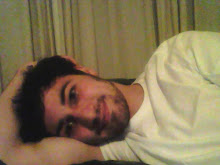Man and animal coalesce in Uncle Boonmee Who Can Recall His Past Lives, Apichatpong Weerasethakul’s ode to a Thai of his past that greatly influences the Thai of his present
Apichatpong Weerasethakul / UK, Thailand, France, Germany, Spain / 2010 / 113m
Are we really humans, or just animals grazing about in a forest? How can we tell the difference? Are we waiting to be hunted, or are we creating a new species by having relations outside of our own? Are we just zombies, sitting in the theatre waiting to be profoundly impacted by a simple piece of art? What defines a piece of art as simple? Are we continually attempting to reach out to our past lives (even if it is subconscious)? Am I really here right now, or am I living this life somewhere else?
Based on a self-published book from 1983 and centered around a character who was fleetingly mentioned in 2004’s Tropical Malady, Apichatpong Weerasethakul’s Uncle Boonmee Who Can Recall His Past Lives defies simple description. It exists in that rare space of cinema as a film you experience rather than view in the traditional sense. Weerasethakul overtly breaks no new ground plot-wise with Uncle Boonmee and it is clear that this is not his intent as an artist. His previous works are marked by a particular avant-garde and experimental aesthetic, and it has never been as beautifully synthesized with his ideas on art and life as it has with this film. Uncle Boonmee is a mood piece, one in which mortality and being are mused over against the backdrop of a dying man’s ghost story.
And a ghost story it is, but definitely not in the common sense. Within the first few scenes, we are introduced to Uncle Boonmee’s deceased wife and estranged son, who comes back as half-monkey half-man with laser red eyes (which prompts an honest and hysterical line about him growing out his hair). At first it is frightening to see this figure (as he pops up right before the film title’s card), but it is not long before the audience trusts him. This is in part because Boonmee, his sister-in-law Jen, and his son Tong approach the ghosts with apprehension for just a few seconds before welcoming them back into the world of the living with open arms. Weerasethakul’s success is that he forges this acceptance as fairly accessible to the audience, which makes nearly anything possibly within the realm of his filmmaking and further blurs the spheres of the living and the departed.
But this is not Weerasethakul’s sole success, of course, because we have not considered his seamless merging of man with nature. His camera frequently remains stationary and lingers on landscapes of forests and animals like water buffalo, which works in conjunction with the immersive sound design to transport the audience into these foreign places. These foreign places end up not seeming foreign at all, actually quite the opposite - they end up seeming familiar, due to Weerasethakul’s skill as a filmmaker to make time irrelevant and ignite a deep sense of site specificity the focus point. There is a universal sense of nostalgia when Weerasethakul shoots a sun descending through the trees because it is not your typical sunset, and we all have experienced it. Although this universal sense of nostalgia is pervasive in some of the sensory-heavy shots, Apichatpong allows for a personal reading as well.
What is specific to this film is part of what makes it so transcendent, like when Uncle Boonmee makes Jen taste honey (which she describes as “heaven” after walking in the sun all day) on his farm or when Weerasethakul breaks off into a thrilling and natural scene where a woman who questions her beauty begins talking to a catfish and is subsequently depicted fornicating with it. The catfish scene is not shot in a provocative or exploitative manner. It never, at any point, feels less than an ordinary way to deal with an identity crisis and not to mention it also furthers Weerasethakul’s contemplation on the convergence of man and animal.
Nearing the end frames, Uncle Boonmee makes it clear that the past affects the present and the future more than we think it does and more than we would like to believe. Weerasethakul adds a very subtle, quiet political edge when a monk takes off his robe in one of the final scenes, which could be interpreted as him dealing with his problems with the Thai government censoring his 2006 film Syndromes and a Century. This scene, among others, firmly grounds the film in Weerasethakul’s reality, a reality which becomes more glowingly optimistic and hopeful as the film progresses (the reality of a Palme d‘Or also helps, and moreover, the recognition the film has received since winning that award is astounding and invigorating).
During the Q&A, Apichatpong spoke about how every reel of film he used (which is about twenty minutes of screen time) was a different ode to his fondness for the Thai films, fables, and folklores of his childhood. His success in this department is singular: it never feels choppy or segmented, one sequence flowing into the next with relative ease and, although it may not be apparent at first, there are interrelated social and philosophical yearnings that permeate the film as a whole. The final scene begs questions about the media and cinema that other filmmakers could only dream of asking in so few words, and that is the power of Mr. Weerasethakul’s cinema - he is able to convey so much with so little.






No comments:
Post a Comment